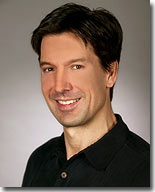Russinovich: Malware will thrive, even with Vista's UAC

Despite all the anti-malware roadblocks built into Windows Vista, a senior Microsoft official is lowering the security expectations, warning that viruses, password-stealing Trojans and rootkits will continue to thrive as malware authors adapt to the new operating system.

"It's a best effort to raise the bar and stop malware from making changes to the operating system but it's not a security boundary," Russinovich said of UAC, the oft-criticized mechanism that requires that all users run without full admin rights.
In a straightforward assessment of the threat landscape in a Vista world, Russinovich described malware authors as ISVs that will code for a standard user environment.
"There is no guarantee that malware can't hijack the elevation process or compromise an elevated application," Russinovich said after providing a blow-by-blow description of how UAC works in tandem with Internet Explorer (with Protected Mode) to limit the damage from malicious files.
Even in a standard user world, he stressed that malware can still read all the user's data; can still hide with user-mode rootkits; and can still control which applications (anti-virus scanners) the user can access.
"We'll see malware developing its own elevation techniques," Russinovich said. He demonstrated a social engineering attack scenario where a fake elevation prompt can be used to trick users into clicking "allow" to give elevated rights to a malicious file.
He predicted a world where malware authors create programs that elevate rights to jump accounts and disable security or develop general and application-specific elevation hijacking.
"You will see malware spoofing over-the-shoulder credential prompt and even launching a medium integrity level process int he administrator's account," Russinovich said.
At this level, the malware author has access to all the administrators data and can inject itself into the admin's account (e.g. the Runkey) to use additional elevation techniques.
"The malware author will say, 'I can live in a Vista world without needing to take over the entire box'. They will end up thriving in the standard user environment, setting up botnets, grabbing your keystrokes," he declared.
Russinovich stressed that UAC's fundamental contribution is to make it possible (in most cases) to run as standard user to protect the system and other users on the system.
"Elevations are a convenience and not a security boundary," Russinovich reiterated, hinting that Windows will evolve further to promote the standard user concept with things like per-user installations and secure elevations.
[UPDATE: April 24, 1007 at 9:04 PM] Russinovich e-mails the following in response to this blog entry:
It would be great if you would post an update that clarifies my message and that the use of 'thrive' in the blog headline doesn't reflect the spirit of my slides or delivery. Please point out that I was stating that malware will evolve to run as standard user, where it can accomplish many of its goals, not that Vista somehow enables malware -- in fact, ASLR, service security hardening, Defender, SDL, and other security enhancements raise the security bar in Vista.